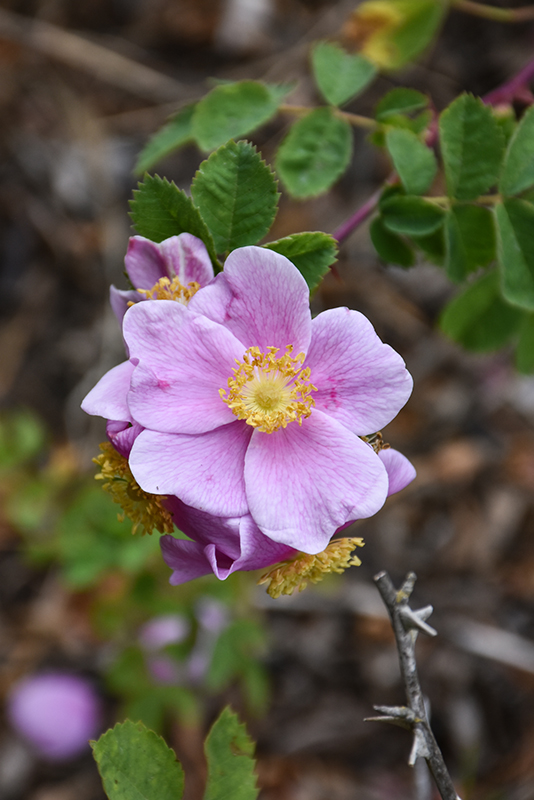Height: 6 feet Spread: 6 feet
Sunlight:
Hardiness Zone: 5a Description: A remarkably robust California native, featuring volumes of fragrant single pink flowers in spring and summer with bright red hips in fall; upright, bushy, extremely thorny with a suckering habit; resistant to disease; highly adaptable to sun and soil Ornamental Features California Wild Rose features showy fragrant pink flowers with lavender overtones and gold eyes at the ends of the branches from mid spring to late summer. The flowers are excellent for cutting. The fruits are showy scarlet hips carried in abundance from early to late fall. It has dark green deciduous foliage. The serrated oval compound leaves do not develop any appreciable fall color. Landscape Attributes California Wild Rose is a dense multi-stemmed deciduous shrub with a more or less rounded form. Its average texture blends into the landscape, but can be balanced by one or two finer or coarser trees or shrubs for an effective composition. This shrub will require occasional maintenance and upkeep, and is best pruned in late winter once the threat of extreme cold has passed. It is a good choice for attracting bees and butterflies to your yard. Gardeners should be aware of the following characteristic(s) that may warrant special consideration; California Wild Rose is recommended for the following landscape applications; Planting & Growing California Wild Rose will grow to be about 6 feet tall at maturity, with a spread of 6 feet. It tends to fill out right to the ground and therefore doesn't necessarily require facer plants in front, and is suitable for planting under power lines. It grows at a fast rate, and under ideal conditions can be expected to live for approximately 30 years. This shrub does best in full sun to partial shade. It is very adaptable to both dry and moist growing conditions, but will not tolerate any standing water. It is considered to be drought-tolerant, and thus makes an ideal choice for xeriscaping or the moisture-conserving landscape. This plant should not require much in the way of fertilizing once established, although it may appreciate a shot of general-purpose fertilizer from time to time early in the growing season. It is not particular as to soil pH, but grows best in clay soils, and is able to handle environmental salt. It is highly tolerant of urban pollution and will even thrive in inner city environments. This species is native to parts of North America.![]()
![]()
![]()
![]()
![]()
![]()
![]()
![]()
![]()
![]()
![]()
![]()
![]()
Plant Finder
Characteristics
Applications
Features & Attributes


